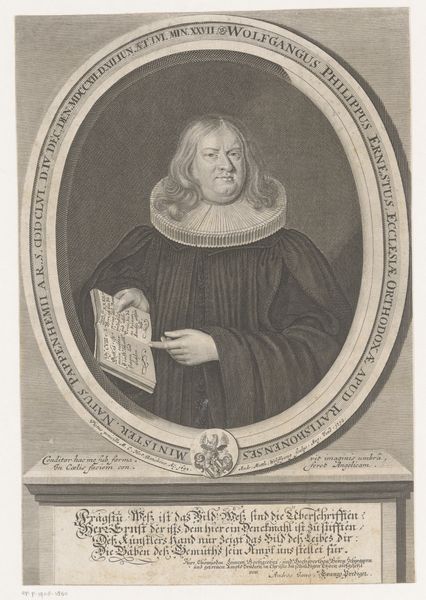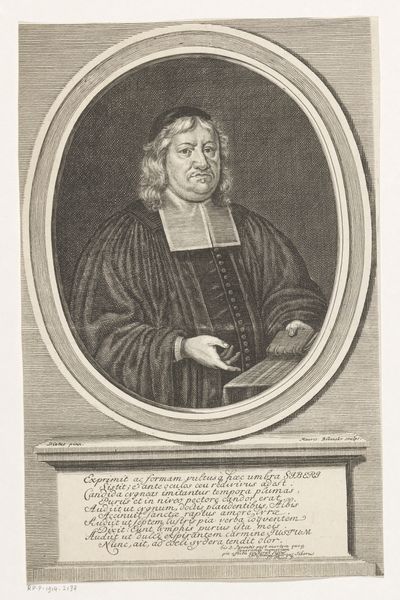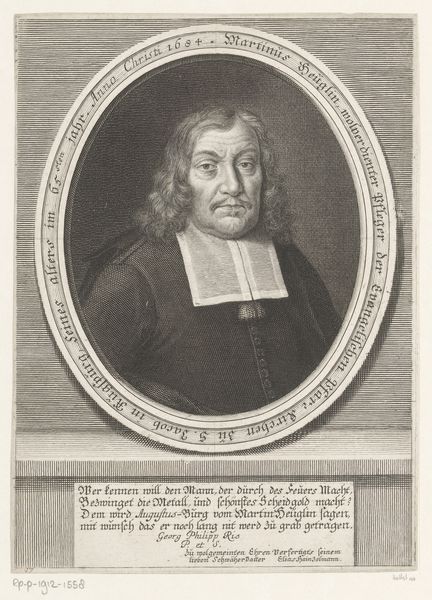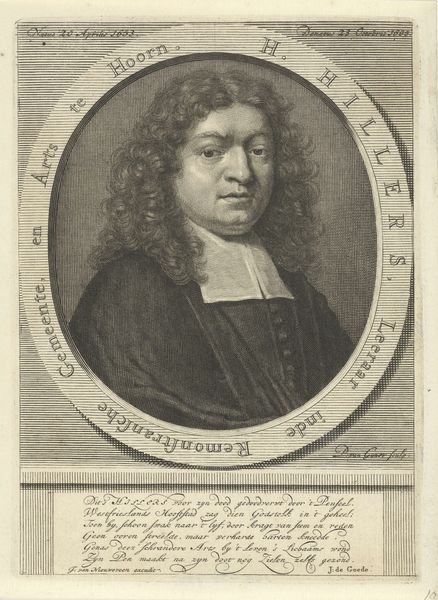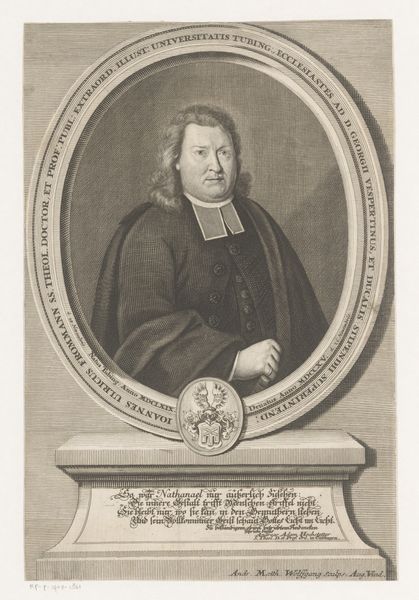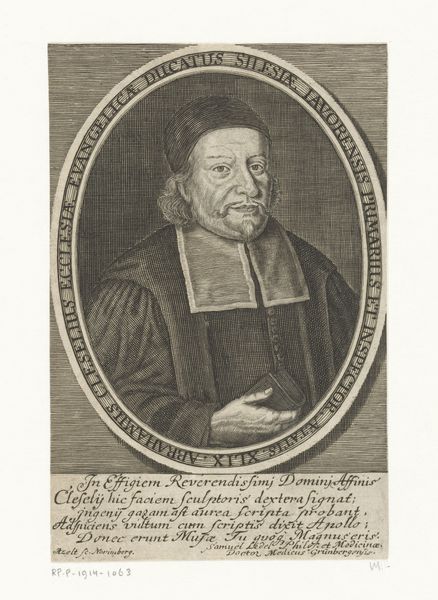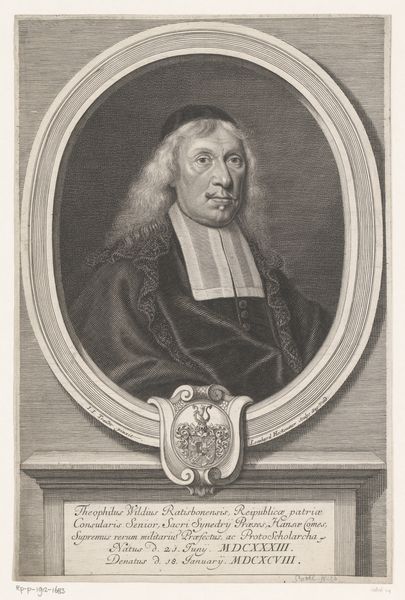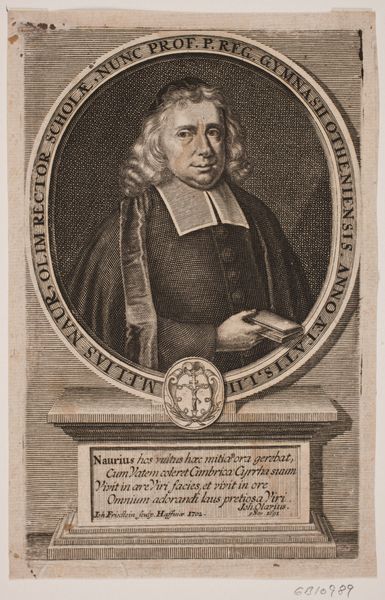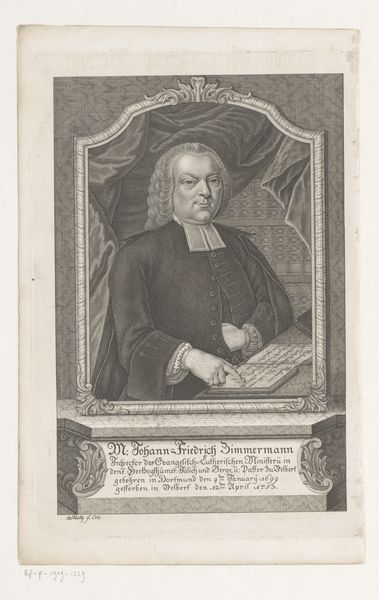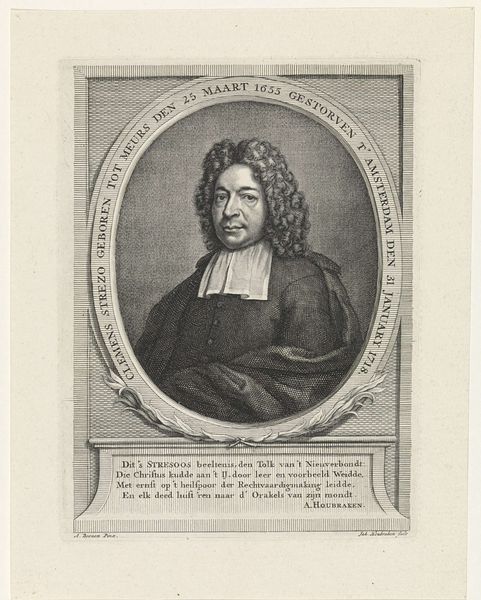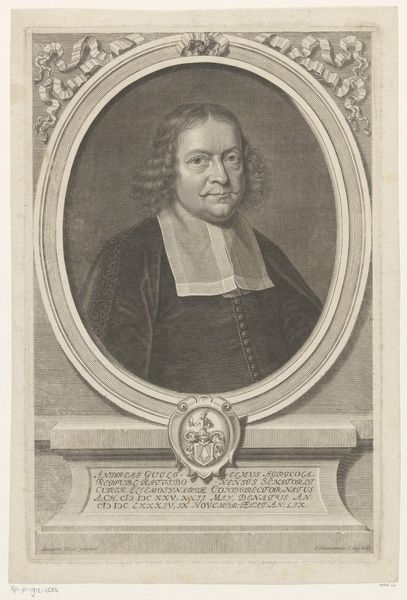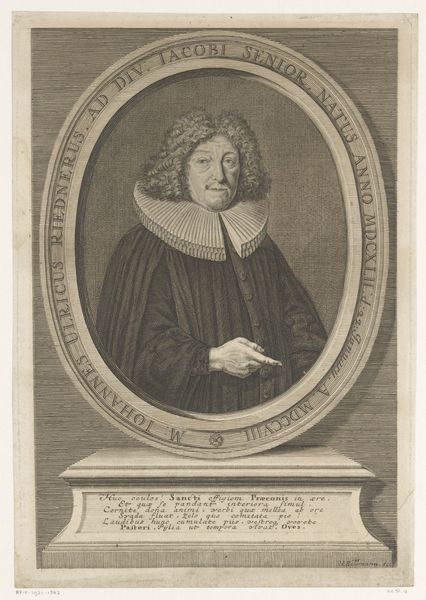
engraving
#
portrait
#
baroque
#
academic-art
#
engraving
Dimensions: height 342 mm, width 238 mm
Copyright: Rijks Museum: Open Domain
Curator: This is "Portret van Georg Heinrich Häberlin," an engraving, most likely crafted between 1699 and 1704. Häberlin, it says in the inscription, held numerous important religious roles including being abbot and visiting monasteries. The print is currently held in the collection of the Rijksmuseum. Editor: Immediately, the formality strikes me. It’s not just a portrait; it’s a statement of power, intellect, and status within the church. There's a rigidness and a level of symbolic complexity happening within the frame of this period engraving. Curator: Precisely! We should observe the technique and tools used to realize this. Note the intricate hatching and cross-hatching that define form and shadow. An artisan working closely with the profile subject and utilizing various burins would have constructed the many fine lines that model Hӓberlin’s face and the drapery of his garment. Editor: Thinking about access to such a portrait: Who was it for? Beyond memorializing Häberlin, who would have seen and used this image? Was this an accessible object? Also, what is the labor connected with the book? Who inscribed those words, and what would it have been like to learn those skills? I am so curious about that access. Curator: Certainly, the level of detail suggests it was meant for circulation amongst the elite, solidifying Häberlin's position within religious and academic circles. Editor: Yes, this definitely feels like a carefully constructed visual assertion of dominance. If we consider the historical context—the Baroque era, with its opulence and displays of power—this engraving is more than just a portrait; it's a carefully designed assertion of theological and political legitimacy during times of intense religious debate. It's also intriguing to think about how this imagery would have played into larger debates about morality, piety, and the Church's place within the community. Curator: Looking at the production itself, it reflects a whole network of skilled laborers that supported religious authority in 17th and 18th-century Europe. The production is tied directly into Hӓberlin's prestige as an Abbot and his service to religious institutions of the area. Editor: So when we view art, we really view a nexus of ideas and production, social structures, and ideologies. I will look at 18th century engravings much differently going forward. Curator: Agreed; now, let's consider the implications...
Comments
No comments
Be the first to comment and join the conversation on the ultimate creative platform.
